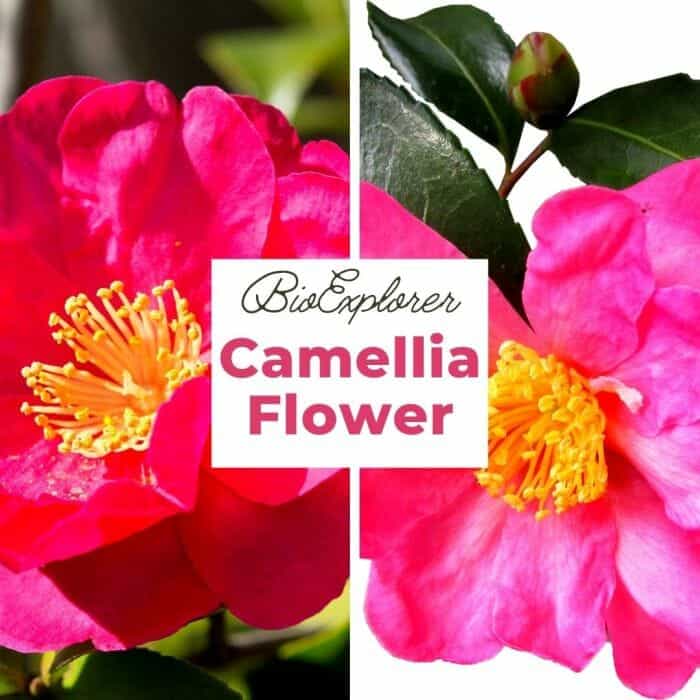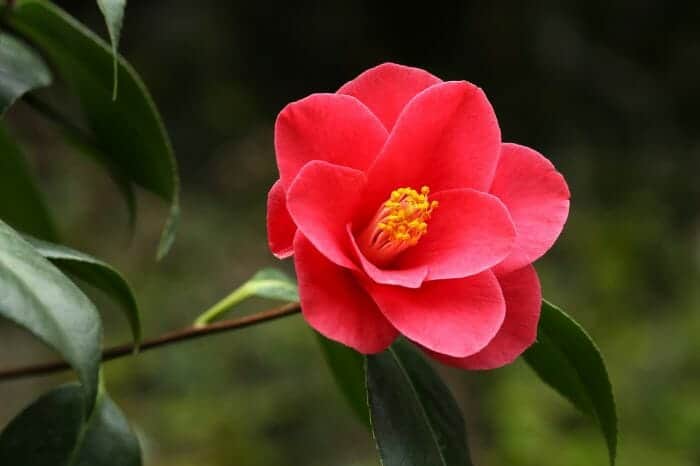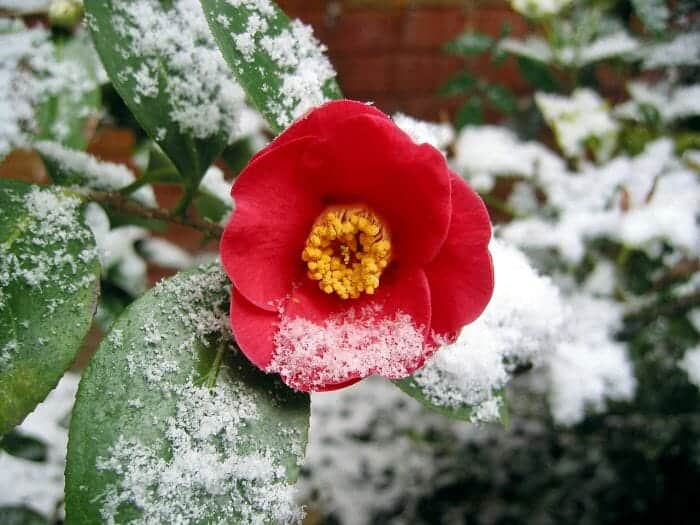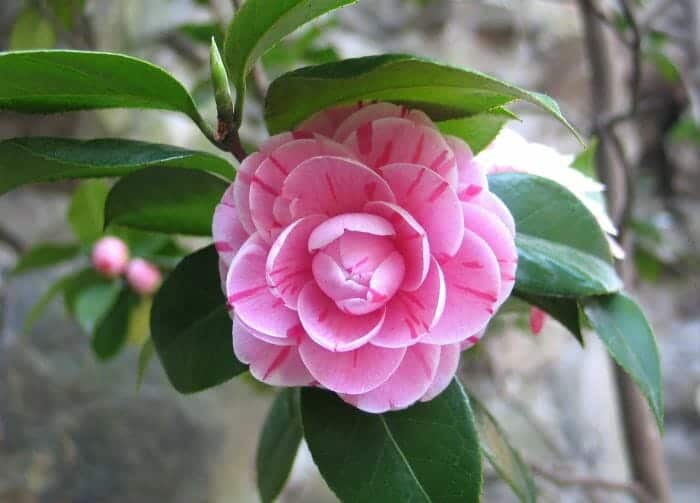
| Plantae | Magnoliopsida | Ericales | Theaceae | Camellia japonica |
- Plant Type: Evergreen woody tree or shrub
- Common names: Camellia, Common Camellia, Japanese Camellia, Thea japonica, Peony Camellia
- Flower Dimensions: 1.5 to 5 inches across
- Color: Pure white, soft pink, dark red, yellow, lavender
- Flowering Season: Winter to spring (February to April)
- Places in Japan with Camellia: It is most frequently found in Japan’s thickets and mountain forests.
While many flowering shrubs peak in Summer, the Camellia flower is endemic to Japan. It is unique because it mainly blooms in early spring and late winter. Camellias, named after Georg Joseph Kamel, are beautiful flowers from the Theaceae family.

The flower is a small tree or an evergreen shrub. It features large petals and is hardly scented, making it an excellent gift for allergy sufferers. Camellias originally came from Japan and China.

These beautiful flowers made their way to Europe in the mid-18th century and North America before the turn of the century.

There are nearly 300 species[1] of Camellia, the color of which includes white, pink, and red. Camellia is best known for its two-leaf (multi-leaf) cultivars. In their wild form, 5 to 7 petals cluster a mass of stamens, with the sepals falling off when the petals are opened.
The tree typically has glossy green, oval leaves around 10 cm long and about 9 meters high. The foliage is waxy and usually easy to care for, while the large, multi-petaled flowers are highly scented.
These beautiful flowers will brighten your day regardless of color, not just because of their beauty but also their meaning.
Camellia japonica is an evergreen shrub commonly grown for landscaping. It generally grows up to 6-12 feet on stems.
- It has over 30,000 cultivars of flowers with different forms and colors.
- The leaves are glossy, leathery, and about 2 to 3 inches long. The foliage is also attractive and can be used as beautiful hedges.
- The blooms of Camellia range from miniature to huge in single, semi-double, double, formal double, or complete peony form. The blooming of each flower can last 3-4 weeks.
Fun Facts About Camellia
- The white-flowered camellia, “Daijohkan”, was considered a palace plant, and its propagation was officially forbidden until 1964.
- The flower “beheads” itself when it dies. This is why it is not a good gift for the sick or the injured.
- The camellia with red color is a symbol of Love. It also symbolizes the honorable death of warriors and samurai[2].
- The white camellia is given to someone well-liked because it symbolizes adoration.
- Camellia is a sign of bad luck for the samurai to witness the wilting of the flower.
- The genus Camellia was named after Georg Kamel, a Jesuit priest and botanist. The specific epithet japonica was given by Carl Linnaeus. The Camellia[2] signifies adoration, devotion, and loveliness.
- In East Asia, the oil of C. japonica is traditionally used to nourish and soothe the skin. Research[3] showed that the oil from the plant showed anti-inflammatory activities and mechanisms.
- The leaves of Camellia japonica are a tea substitute[4]. Camellianoside (novel flavonol glycoside) and the other 3 known flavonol glycosides were isolated by scientists from the leaves of C. japonica. Researchers[5] discovered that flavonol glycosides showed higher antioxidant activities.
- The Camellia japonica plant has shown anti-cancer activity. Researchers[6] investigated the anti-cancer property of dried pericarp C. japonicafermented with A. oryzae. The result suggested it can be a possible head and neck cancer treatment.
- Extracts from the stem, leaves, and seeds of C. japonica[7] possess antimicrobial activity against B. cereus and S. aureus. Scientists stated that when these extracts are combined with the appropriate formula, they can be used as cosmetic ingredients.











